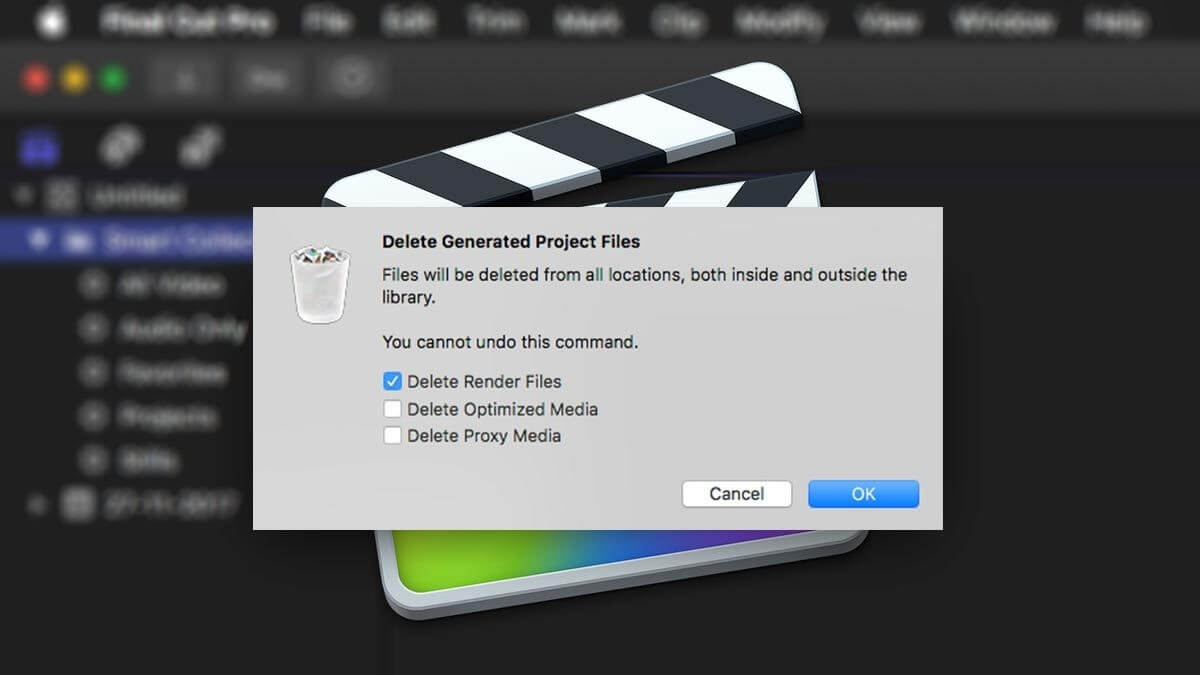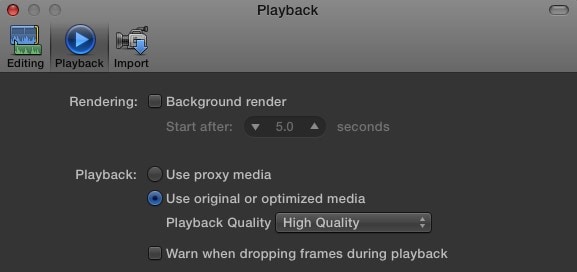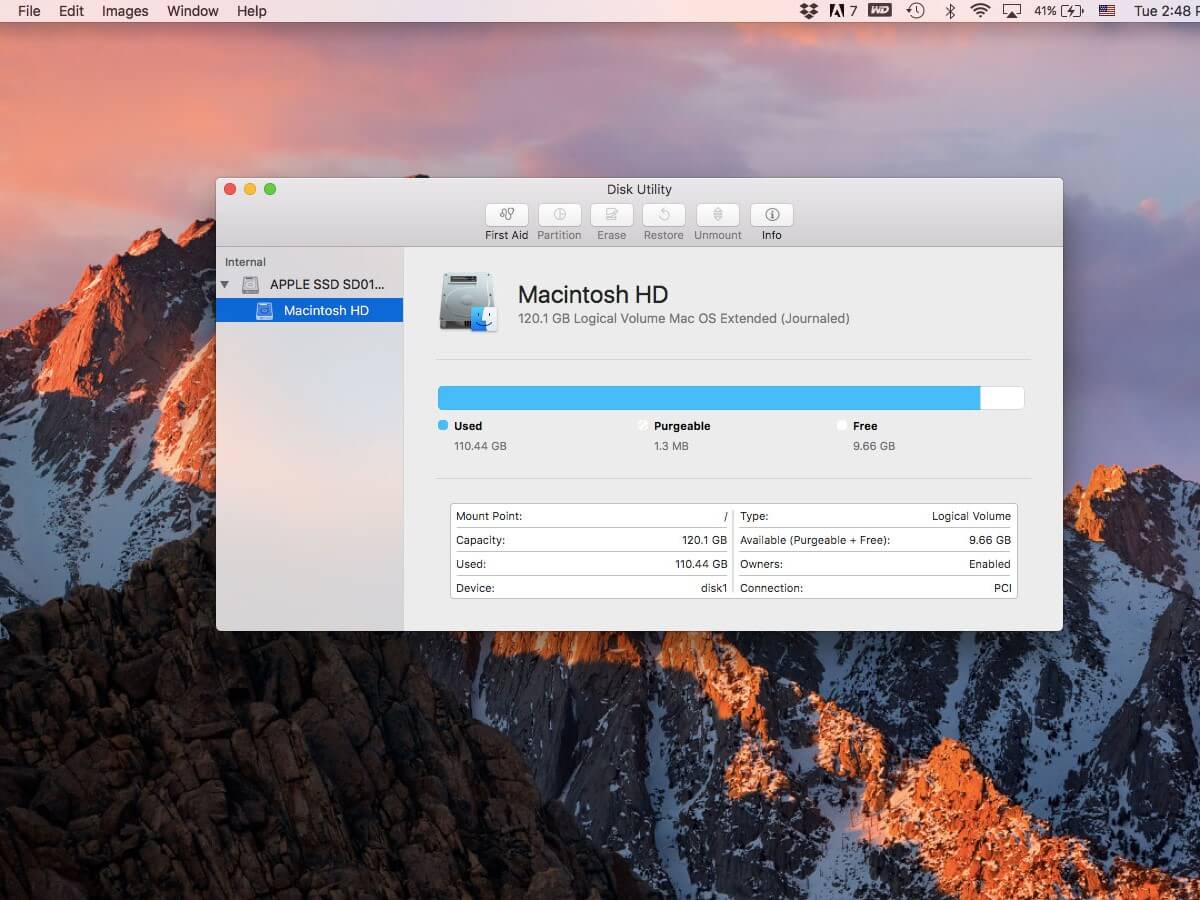
New FCPX Storage Solutions Masterclass on Freeing Up Space on Your Mac

FCPX Storage Solutions: Masterclass on Freeing Up Space on Your Mac
How to Free Up Disk Space for Final Cut Pro X?

Benjamin Arango
Mar 27, 2024• Proven solutions
Whenever you are working on a Mac ensure that 10% of your storage is ideal and free. Without free space, your work is going to get slow. Sometimes you have to erase a portion of things occupying extra storage to work smoothly.
Never ignore and disregard the errors and alerts of the space disk being full. This article is all about how to fix the disk space in the final cut Pro X. Moreover, this article will cover the different ways via which you can check mac storage space, and how to free up space in FCPX and Mac.
Quick Guide:
Part 1: How to free up space from Final Cut Pro Library?
It takes three steps, and here are these steps.
Step1: Remember to delete unused clips and original medias
To make room in your final cut pro, delete all the unused clips and original media. Delete the generated library files and delete the render files. Before deleting make sure to check whether to delete unused or used render files.

Step 2: How to save space with files and transcoding options?
It happens in final cut pro, that while working, it creates records, proxy files, and rendered files. To save space, you have to delete these files. It is advised to delete the generated rendered files before moving the library to mac Final Cut pro. Moreover, Mac recovers all the files the following time you open the project
Step 3: How to stop background rendering and how to delete render files in Fcpx?
Sometimes temporary videos and audios are created in Final cut pro X . Background rendering starts just after 5 seconds you quit working in mac. You can physically control the background rendering in Final cut pro. When you want to have more control, disable rendering in FCP and choose which clip you would like to render. You can change the preferences to disable or enable through the FCPx settings. Once you disable the rendering, it is your choice to select the specific clips to render.
Open the preferences menu in your mac and render the highlighted clips in your Fcpx timeline. Use the control+R shortcut to render the files.
To delete the render files in Fcpx, Delete the generated files. Files> generated files. A window will appear, Click ok on delete render files.

Part2: What to do with the “not enough disk space” error even with enough space in Mac?
Sometimes still having a lot of space, Your final cut pro X shows not enough disk space error in FCP X. Help!
Have you ever got the error of not having enough space at available destinations whenever you import anything to FCP X.?
Quick GuideFollow the below steps to solve this problem
- Click and select the library in FCPX
- Then go to the File menu and select “Delete generated library file”
- Next, Select all the render and proxy files
- You might not be using optimized files, In that case, select optimized files
- Exit FCPX.
- To reboot, hold down both option and command keys
- Delete the preference files
- If the error persists, run the utility folder that is inside the Application folder.
- Execute First aid in all the units.
- If the error persists, obtain a copy of the disk, and repair the directories on all the drives.
Part 3: How much space can FCPX take in Mac?
Today, when we have hard drives and multi-terabytes, many of us have stopped looking at the disk space. Many of you usually don’t bother until you get an alert that the disk is full.
Sometimes the largest drives get filled eventually. If you haven’t checked your disk space yet, use your Mac and follow the instructions given below. You may be surprised about how much space can FCPX take.
Here is how you will do it:
Option 1: Checking the mac storage through “About this Mac”
Now it is a bit easy to check the storage from about the section. You will find this in most of the recent MAC versions.
Click on the mac logo and then click on “About this mac”.
Click on “storage” and you will see a reference chart stacked portraying the capacity of the disk and the absolute amount of storage taken by different categories of information. Moreover, you will find out the space that is yet accessible to you.
Option 2: Checking the mac storage through “Disk utility”
If you’re a Mac user, you might know that there is a disk utility app. You can easily get a readout of the available space from there.
Open your Finder and click “Applications” on the left side.
Or click the magnifying glass in the upper right to find disk utility.
You will find utilities in Applications. Applications> utilities.
After the disk utility opens, you can see the available used spaces. Remember to put your hard drive’s name from the list. The popup window that opens up will also tell you the free space of any device connected to your Mac.

Option3: Checking the storage from the Finder
You can get a preview of your storage device by clicking an item in the Finder and pressing the spacebar on your keyboard. Let’s suppose you need to check a particular document without opening it.
Select that document and press the spacebar. You will know what’s inside without even opening it.
Quick Guide Here is how you can do it
- Go to Finder and select Finder>Preferences, next Click General, modify the settings and you will see the storage device on the desktop.
- To check the available or remaining space, click the spacebar. As you click it a window popup will show you the remaining space.
- Press the spacebar again to close the window or you can do it via command. Press Command-W.
- Turn on the finder status bar on your window. In case you want to check the disk space frequently.
- Open a Finder window and next open the view menu. As you select the show status bar option, you will see the number of items in the folders. In the other case, if you are viewing the folder you’ll get the idea of remaining or free space
If you’re looking for a lighter alternative to Final Cut Pro, try Filmora to save more space!
So, is your FCPX good to go? Get your tutorials for FCPX here!
Part 4: How to free up space in Mac?
Find out what’s occupying the room in your Mac to save room for final cut pro. Get familiar with how to deal with your Mac’s capacity. Acquaint yourself with the ideal approaches to free up space in Mac.
Nowadays, Macs have limited and restricted capacity due to the SSDs present in them. When there were hard drives in Mac, we had a huge room on them. In recent memory, high-resolution videos, music, and other functional records take up more capacity. When you run out of space, it hampers your work and processing.
Quickly clear your mac space.
If you are in a hurry, you can do the below things to quickly clear up the space in your mac.
- Select the download folder and open it in the Finder. Now select the folder whose content you don’t need and trash it.
- Move to the home folder and open a new Find window. Press command-F.
- Click the drop-down menu to choose “other.”Look to the box next to “Document size”. Press ok. Choose” greater than” in the next dropdown menu. With this choose the unwanted file or the one that is no longer useful to throw in the trash.
- Another thing that you can do is, move those files in the trash that you haven’t opened in the last year.
- If your desktop has a lot of unused stuff and is taking space, then delete the folders on the desktop.
Ways to clean junk on your Mac
There are many ways to clean garbage records on Mac. You may have different types of garbage in your Mac. Here is a simple solution for the elimination of junk from your Mac. Along with occupying the space, junk slows down your Pc, phone, and Mac.
Cleaning cache files: Every Mac has some files stored which are known as cache files. Some temporary files are kept in Mac to speed up the Apple software. It better to clean the files before it gets accumulated and hampers the performance.
- Press command +shift+G after opening the Finder.
- Enter this command in the field box~/Library/Caches.
- See all the visible files on the appearing window
- Select all files to delete, and you can delete one by one
- Enter the username and password in the popup window
Similarly, you can clean the system log files too from your mac by below steps:
- Go to the folder. Before selecting Go, enter the /var/log/.
- All the system files are visible to you. Now, you can easily delete unwanted files.
Clean with Clean MyMacX
You can now clean your mac with this application. Download this application for free. After launching it, see the features on left and click on the system junk. Do scanning and check the opposite side of user cache files and delete the items, you want to delete. Lastly, press clean to clean it. Your Mac is now as new as before. Clean MyMacX cleans all the junk and makes your mac clutter-free.
Conclusion
Move the unwanted and unused clips from your Mac final cut pro X. Even you can free up the storage by deleting the whole event. A few media files stay in the library as many projects use the same media.

Benjamin Arango
Benjamin Arango is a writer and a lover of all things video.
Follow @Benjamin Arango
Also read:
- 3 Methods to Mirror Infinix Note 30i to Roku | Dr.fone
- How To Activate and Use Life360 Ghost Mode On Xiaomi Redmi Note 12 4G | Dr.fone
- How to See Someones Location on Apple iPhone 14 Pro | Dr.fone
- In 2024, Sony Vegas Pro Has Not the Feature You Want? Cant Import Your Video Source Files? Any Other Problems? Find an Alternative for Windows in This Article
- TikTok Watermark Removal Made Easy Top Picks and Reviews
- Top 6 Ways to Transfer Text Messages from Vivo Y78 5G to Other Android Devices | Dr.fone
- Unlocking IG Potential Strategies for Accumulating 1,000+ Likes/Month
- Updated Free Green Screen Software for Mobile Top Picks for Android and iOS
- Updated Top 5 Best Free FLV Video Editors
- Title: New FCPX Storage Solutions Masterclass on Freeing Up Space on Your Mac
- Author: Giselle
- Created at : 2024-11-14 00:52:51
- Updated at : 2024-11-14 19:09:36
- Link: https://ai-vdieo-software.techidaily.com/new-fcpx-storage-solutions-masterclass-on-freeing-up-space-on-your-mac/
- License: This work is licensed under CC BY-NC-SA 4.0.

